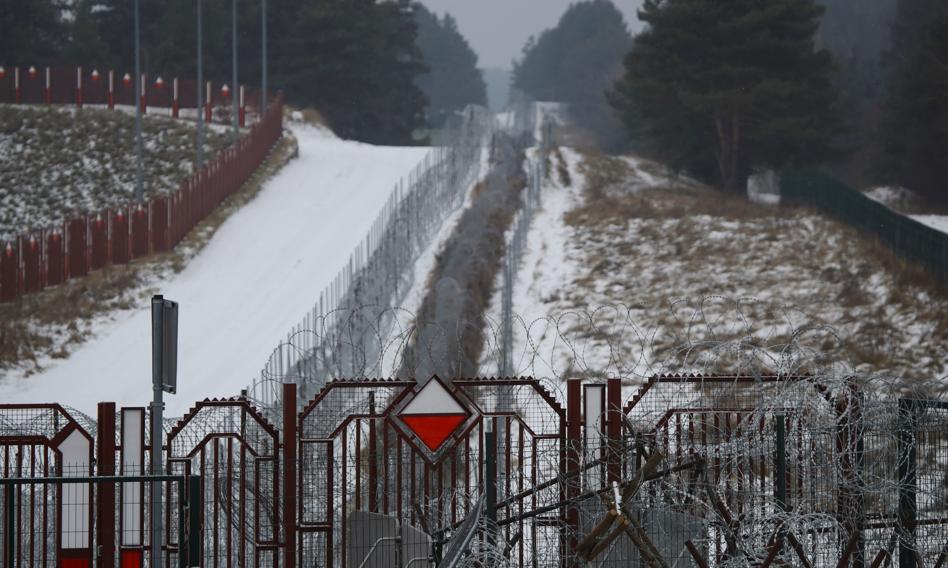On the contrary: there is great optimism for 2022. Whether precision mechanics, foundries, rubber processors, the corona-ravaged trade fair industry or the mining industry, which has been in crisis for years: none of the 48 business associations surveyed by the Institut der Deutschen Wirtschaft (IW) at the turn of the year anticipate a decline in production or business. That has never happened before and shows the extraordinarily high expectations for the economy .
According to IW boss Michael Hüther, three factors are responsible for this: “Catch-up effects, because the pre-crisis level has still not been reached. Second, catching up in view of the shortage of materials and major delivery delays. And third, historically high order backlogs. ”
In 39 trade associations, the majority of companies are assuming a higher production level in 2022 than in 2021. These include all the important sectors such as chemicals, pharmaceuticals, automobiles, aviation, electrical industry, construction, handicrafts, retail, tourism and real estate.
Top jobs of the day
Find the best jobs now and be notified
by email.
Four associations even calculate with significantly higher production, including the labor-intensive mechanical engineering, steel and metal processing industries. On the one hand, this is likely to be due to the expected higher international investment activity. On the other hand, this also reflects the trend reversal in Germany’s key industry, the automotive sector, which is often hoped for by the sectors.
The good prospects are essentially based on two causes: catch-up effects and investments .
Much pent-up demand
Since late summer, the global economic recovery, which should actually grow more strongly in 2021 than since the oil crisis in the 70s of the last century, has stalled. The main cause is the lack of material and delivery problems because there is not enough container capacity on ships and truck drivers. Germany especially. In October, industrial production in this country was only 2.8 percent higher than in the previous month. A real recovery as it had been prophesied had long since ceased to exist. “The ongoing supply bottlenecks are too heavy a burden on companies in the manufacturing industry, whose current production is around ten percent below the level that would be expected in view of the incoming orders,” says Ulrich Stephan, chief investment strategist at Deutsche Bank .
The discrepancy is particularly striking at around 40 percent for Germany’s car companies. But machine and electrical engineering production are also hit harder than average. “Overall, noticeably weaker or even stagnating economic growth in the current and first quarter of 2022 is therefore possible,” said Stephan.
The Munich Ifo Institute speaks in this context of a “bottleneck recession”. On the one hand, the shortage of materials in German industry worsened in November. According to a survey by the economic research institute, 74.4 percent of the companies complained about bottlenecks and problems in the procurement of primary products and raw materials. The German auto industry is expected to produce almost a fifth fewer vehicles this year than last year. That would be as few as the last time in 1975.

It should also get worse at the beginning of the new year before the situation relaxes . This is what 70 percent of wholesalers expect, as the industry association BGA determined in a survey of its companies. According to this, the supply of raw materials and preliminary products is currently secured for only three percent of wholesalers. In contrast, 44 percent of the companies surveyed spoke of “massive supply problems”. Accordingly, there is a lack of electronic parts and building materials, but also chemical substances and packaging.
But with a view to the year as a whole, that also bodes well. Many supply bottlenecks are tightly limited in time and will resolve, such as the shortage of wood and waste paper.
As a result, the supply chains should normalize from the second quarter, of which the vast majority If the company runs out and the infection situation relaxes overall, German industry, with its order books still full, should drive the expected recovery of the German economy.
Because global demand continues to be large, and that’s the only reason why delivery problems arise. In this respect, many orders, sales and profits that were actually planned for the current financial year will be postponed to 2022. And therefore the prospects for most companies and sectors have improved due to the enormous backlog in the industry.
Favorable environment for increasing investments
The good ones The prospects for most industries for the new year can also be explained by the global investment cycle, which is starting again, and improved export expectations.
Even before the outbreak of the pandemic, corporate investments lagged far behind and spending on machinery and other equipment was rather low. In order to achieve the long-term trend again, in Germany about ten percent are missing.
Half of the associations surveyed by the IW expect higher investments in their area in 2022 compared to the previous year, including sectors such as the construction industry, which suffered less or not at all during the pandemic. “In many industries, high and increasing investments are pending when it comes to new business processes, climate neutrality, structural change and digital transformation,” says IW boss Hüther.

The investment climate is brightening, especially within the service sector. There is no association here that is responsible for declining investments for its companies.
“I expect strong growth in Corporate investments as soon as the uncertainty associated with the pandemic subsides “, says chief investment strategist Stephan. and the financial conditions could hardly be better in view of the low interest rates and high liquidity reserves of the companies “, says Stephan.
This is confirmed by record high cash holdings: German companies hoarded 688 billion euros in November more liquidity than ever before. But: The money is melting away, because it is interest on the bank accounts taking into account the inflation with an average of minus 4.6 percent. This is shown by data from the international law firm Freshfields, which is available to the Handelsblatt. The basis is Bundesbank – statistics on the deposits of around 1.3 million companies.
Extensive government infrastructure programs, including the climate-neutral restructuring of the economy, are also providing growth impulses. German mechanical engineering companies in particular are likely to be among the winners of a global investment boom due to their high export share of 80 percent.
Series: Industry Outlook 2022
At the turn of the year, the Handelsblatt analyzes the current situation in the most important German industries and service sectors and gives an outlook on the challenges of the coming year.
Not a single industry is anticipating a decline in production and business in 2022 – most companies are even expecting a strong boost. This is also due to the lack of material.
Coal phase-out by 2030, strong expansion of wind and solar energy: the traffic light is ambitious Energy transition plans. This is good news for a number of companies.
The shortage of semiconductors will in the industry also in the coming year. At the same time, experts forecast new record sales of electric cars.
According to the analysis of the IW, the motives for investments are nevertheless very different: On the one hand, there are areas that are optimistic because of the poor starting position. This applies to many services such as hospitality and tourism. In other words, areas that were hardest hit by the standstill during the pandemic.
In industry, on the other hand, investments are already high at many companies, so that a number of sectors such as chemicals and pharmaceuticals “Only” expect stagnation. However, this does not mean a weakness, but often further expenditure at record levels, especially with the car manufacturers who have to cope with the conversion to electromobility.
The shortage of skilled workers remains the greatest challenge
In view of rising expectations for production and investments, 21 of the 48 associations surveyed expect an increase in the Occupation. This includes many industrial sectors such as the pharmaceutical, metal and electrical industries. The service sector wants to hire additional employees in the areas of freight forwarding, investment and leasing, information and advertising in the coming year according to staff. This also applies to Germany’s machine builders. They are particularly hard hit by the shortage of skilled workers.
The majority of the 356 HR managers questioned in November saw bottlenecks in all employee groups with the exception of auxiliary workers, as the industry association VDMA recently determined. This is particularly true of academics (81 percent) and skilled workers (90 percent). This means that the situation, especially among skilled workers, has worsened again since the survey in June.
Four out of five respondents (82 percent) want to increase the permanent workforce in the next six months and are looking for qualified personnel. Finding this sufficient in 2022 and in the years thereafter will not be easy. IW boss Hüther predicts: “If the labor force shrinks from 2025, the problem of skilled labor shortages will be much more serious than in 2022.”
More: As much cash as never – companies are caught in the liquidity trap
Note: This article have been indexed to our site. We do not claim legitimacy, ownership or copyright of any of the content above. To see the article at original source Click Here













